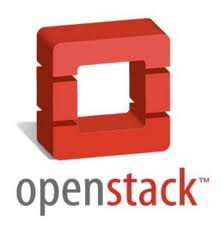Linux won. If you think that statement is inaccurate you need only look at the nearest
Android device or AMI options on
Amazon to find out you're mostly wrong. It took years -- more than a decade and then some -- but Linux has not only arrived, it's nearly taken over the world.

Fast forward 10 years and we’re looking at another highly recognizable open source effort,
OpenStack. OpenStack is most often referenced in conjunction with cloud because it's seen as one of the ways in which IT can transform itself from an individually managed, dedicated (and disconnected) set of network and application infrastructure elements to an integrated, shared, centrally managed private cloud. That is, if it can get its act together. The correlations between Linux and OpenStack are many, particularly when comparing the framework and community to the early days of Linux. OpenStack today is hampered by poor documentation (RTFM N00b is not an appropriate response, BTW, especially when the documentation that does exist is spotty, often conflicting and lacking details necessary to implementation), a lack of governing authority, multiple forks, multiple distributions and naming issues (branding, for those of you in marketing), and requires a high degree of skill to get it up and running successfully. It is frequently missing “drivers” (plug-ins) for common network elements and has to be pieced together in much the same manner as slackware. Which is pretty much where every distribution of Linux was just over 10 years ago. In fact, anyone who tried to upgrade or migrate from early (and even many modern) versions of Linux will find this statement, from an unnamed executive with an OpenStack vendor on
GigaOm, chillingly familiar:
Still, “wipe out and re-install?” That noise you heard is the scream from IT departments across the land. "Backbreaking” OpenStack migrations hinder enterprise upgrades.
Many folks doubted that Linux would ever become anything more than a geek's playground, yet here we are with billions of Android-based smartphones and tablets -- not to mention the majority of Web servers around the globe -- running on the would-be-king operating system. OpenStack can win, too, but not without addressing its shortcomings and overcoming similar challenges. The challenges inherent in OpenStack are certainly those that, if not addressed, will impede any kind of future success. The perception of OpenStack today is that it’s kludgy, difficult to implement, hard to understand, poorly documented and, in general, immature. That’s not far off-base. It's moving at breakneck speed to become what enterprises want, but without necessarily paying attention to what enterprises
need. Says our unnamed executive:
One issue is that OpenStack, at just over three years old, is still very young but is rushing to add features and functions to compete with AWS. “All of that upstream development to add features is part of a mentality that isn’t focused on basic things that enterprises need — like backwards compatibility,” “Backbreaking” OpenStack migrations hinder enterprise upgrades.
What OpenStack must do to reach its full potential is to understand that Linux didn't succeed because of its community and open source roots, but rather almost in spite of them. If ever there was a great example of how getting a community of expert, dedicated geeks to move in the same direction is like herding cats, it is OpenStack (as it was once Linux). It wasn't until companies formed and began taking on this chore that Linux began to really pick up mindshare. Following that model, it's no surprise that folks like
RedHat and
HP and
Mirantis are trying to do the same with OpenStack. The fact that you might be reading this on an Android (Linux) device or desktop today says it can be done. Whether it will work for OpenStack remains an open question.
 Fast forward 10 years and we’re looking at another highly recognizable open source effort, OpenStack. OpenStack is most often referenced in conjunction with cloud because it's seen as one of the ways in which IT can transform itself from an individually managed, dedicated (and disconnected) set of network and application infrastructure elements to an integrated, shared, centrally managed private cloud. That is, if it can get its act together. The correlations between Linux and OpenStack are many, particularly when comparing the framework and community to the early days of Linux. OpenStack today is hampered by poor documentation (RTFM N00b is not an appropriate response, BTW, especially when the documentation that does exist is spotty, often conflicting and lacking details necessary to implementation), a lack of governing authority, multiple forks, multiple distributions and naming issues (branding, for those of you in marketing), and requires a high degree of skill to get it up and running successfully. It is frequently missing “drivers” (plug-ins) for common network elements and has to be pieced together in much the same manner as slackware. Which is pretty much where every distribution of Linux was just over 10 years ago. In fact, anyone who tried to upgrade or migrate from early (and even many modern) versions of Linux will find this statement, from an unnamed executive with an OpenStack vendor on GigaOm, chillingly familiar:
Fast forward 10 years and we’re looking at another highly recognizable open source effort, OpenStack. OpenStack is most often referenced in conjunction with cloud because it's seen as one of the ways in which IT can transform itself from an individually managed, dedicated (and disconnected) set of network and application infrastructure elements to an integrated, shared, centrally managed private cloud. That is, if it can get its act together. The correlations between Linux and OpenStack are many, particularly when comparing the framework and community to the early days of Linux. OpenStack today is hampered by poor documentation (RTFM N00b is not an appropriate response, BTW, especially when the documentation that does exist is spotty, often conflicting and lacking details necessary to implementation), a lack of governing authority, multiple forks, multiple distributions and naming issues (branding, for those of you in marketing), and requires a high degree of skill to get it up and running successfully. It is frequently missing “drivers” (plug-ins) for common network elements and has to be pieced together in much the same manner as slackware. Which is pretty much where every distribution of Linux was just over 10 years ago. In fact, anyone who tried to upgrade or migrate from early (and even many modern) versions of Linux will find this statement, from an unnamed executive with an OpenStack vendor on GigaOm, chillingly familiar:

